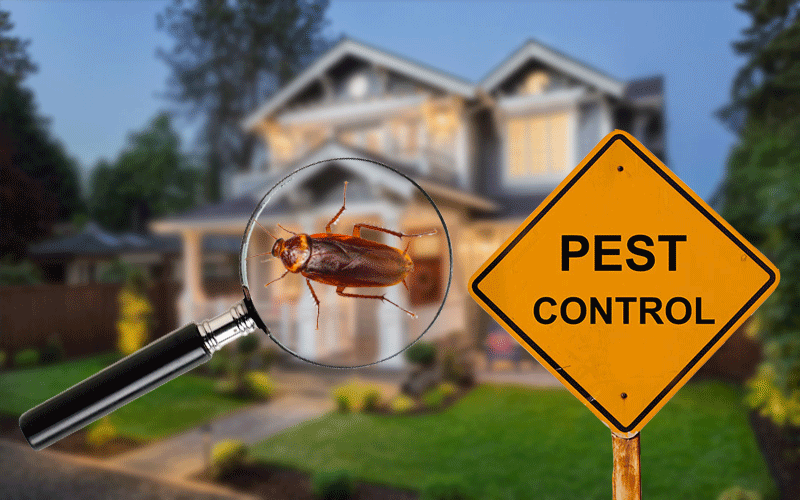Reliable A1 Bed Bug Exterminator Charlotte - Get Rid of Bed Bugs Rapid
Reliable A1 Bed Bug Exterminator Charlotte - Get Rid of Bed Bugs Rapid
Blog Article
Bed Pest Therapy Malfunction: Comparing Chemical Vs. Non-Chemical Solutions
In the world of bug control, specifically when taking care of the persistent issue of bed pests, the option between chemical and non-chemical therapy remedies can be a pivotal one. Both strategies offer unique advantages and disadvantages, influencing elements such as performance, safety considerations, and general expense. By examining the nuanced details of each approach, a more clear understanding of which path to seek in dealing with a bed bug invasion can be achieved.
Effectiveness of Chemical Therapies
Chemical therapies for bed bug infestations have been extensively acknowledged for their potent and quick efficiency in removing these bugs. When considering the performance of chemical therapies, it is critical to comprehend that they can offer a thorough and fast option to a bed bug issue. Professional pest control specialists typically depend on insecticides to target bed pests at various stages of their life cycle, including grownups, fairies, and eggs. These chemicals commonly function by interrupting the bed bugs' nerve system, resulting in paralysis and ultimate death.
Furthermore, chemical treatments have the advantage of providing recurring impacts, implying that they can proceed to remove bed pests even after the initial application. This recurring action is specifically useful in combating any kind of potential re-infestations. Additionally, the fast activity of chemical treatments can bring relief to individuals facing serious bed insect problems, enabling them to regain control of their space rapidly.
Safety Issues With Chemical Solutions
One crucial aspect that requires careful consideration when using chemical remedies for bed pest therapy is making certain the security of occupants and the environment. Exposure to certain chemicals made use of in bed insect therapies can lead to breathing problems, skin irritation, or other unfavorable reactions, especially in individuals with pre-existing problems or sensitivities.
Furthermore, the ecological influence of chemical services is another considerable factor to consider. Some pesticides utilized in bed pest treatments might be damaging to advantageous pests, wild animals, and environments if they leach right into the dirt or water supply. It is necessary to make use of chemical therapies deliberately, following safety standards, and considering less toxic alternatives to alleviate these threats and make sure the effective and safe monitoring of bed insect problems.
Advantages of Non-Chemical Methods
Considering the prospective security issues and ecological impact linked with chemical solutions for bed insect treatment, exploring non-chemical techniques provides an appealing alternative with a number of unique advantages. Non-chemical techniques offer a safer choice for families, particularly those with kids, people, or animals sensitive to extreme chemicals. These strategies get rid of the risks of exposure to toxic compounds, minimizing the potential for negative wellness results. In addition, non-chemical therapies are eco-friendly, as they do not contribute to air or water pollution, making them a lasting choice for parasite control.
Furthermore, non-chemical options can be reliable in targeting bed bugs, including hard-to-reach areas where chemical therapies might not permeate. Methods such as heat treatment, vacuuming, heavy steam cleaning, and mattress coverings give detailed removal without the use of dangerous chemicals. In house exterminator addition, non-chemical methods can be less turbulent, calling for marginal prep work and allowing for quicker reentry right into dealt with areas. In general, selecting non-chemical bed pest therapy methods not just focuses on safety and environmental management but additionally ensures comprehensive and reliable pest control.
Limitations of Non-Chemical Treatments

In addition, non-chemical therapies typically require multiple applications to accomplish successful obliteration. This can be time-consuming and may not constantly guarantee total elimination of all bed bugs and their eggs, particularly in hard-to-reach or hidden areas.
In addition, the success of non-chemical therapies heavily relies upon correct implementation and thoroughness, which can be challenging for people without professional competence. Insufficient application of non-chemical techniques may result in insufficient obliteration, bring about relentless invasions and the need for additional therapies.
Consequently, while non-chemical treatments have their benefits, it is important to acknowledge these limitations and consider them when establishing the most reliable strategy for managing bed insect problems.
Price Contrast: Chemical Vs. Non-Chemical Options
Given the constraints linked with non-chemical treatments, a vital aspect to evaluate in the context of bed insect management is the expense top article contrast between chemical and non-chemical options. In comparison, non-chemical treatments like warm therapy or house exterminator vapor can be much more pricey, with costs varying from $1,000 to $6,000 for a whole home. While the initial expense of chemical treatments may seem reduced, numerous treatments may be required to totally eliminate the infestation, potentially increasing the general price.
Final Thought

Thinking about the prospective safety and security concerns and ecological impact connected with chemical remedies for bed pest treatment, exploring non-chemical strategies offers a promising option with a number of distinct advantages.Offered the constraints connected with non-chemical therapies, a necessary aspect to evaluate in the context of bed bug monitoring is the cost comparison in between chemical and non-chemical options. In contrast, non-chemical therapies like warmth therapy or vapor can be extra expensive, with costs ranging from $1,000 to $6,000 for an entire home. While the preliminary expense of chemical therapies may seem lower, multiple therapies might be required to fully eradicate the infestation, potentially enhancing the overall expense.In verdict, when comparing chemical and non-chemical bed pest therapy choices, it is crucial to take into consideration efficiency, safety, advantages, limitations, and cost.
Report this page